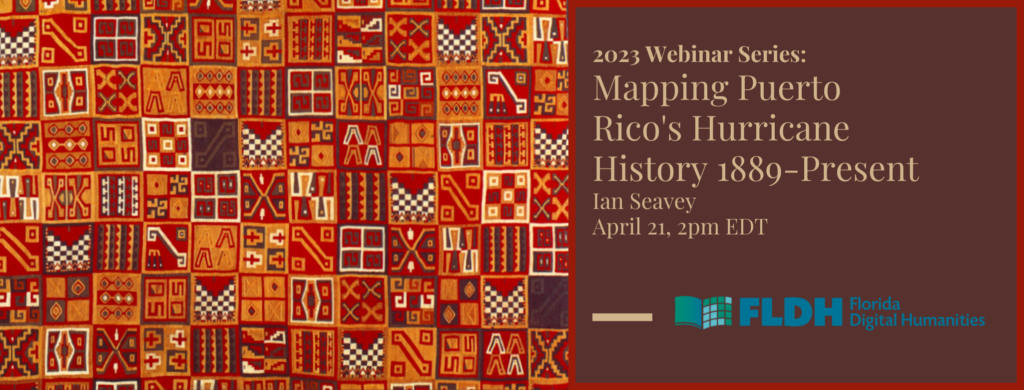
The Florida Digital Humanities Consortium is pleased to invite you the first webinar of its 2023 Webinar Series: Latin America & Caribbean Edition.
Mapping Puerto Rico’s Hurricane History 1899-Present
Friday, April 21, 2 p.m EDT
Ian Seavey, PhD Candidate in the Department of History, Texas A&M University
Hurricanes are an important category of analysis in the study of the Greater Caribbean and specifically Puerto Rico. Most recently, in 2022, Hurricane Fiona and Hurricane Maria in 2017 reminded Puerto Ricans and U.S. government officials that storm preparedness and disaster relief represent a critical part of the colonial relationship. Since the United States acquired Puerto Rico from the Spanish in the War of 1898, 47 hurricanes have battered the island. This amounts to about one every two years, the most out of all the islands in the Greater Caribbean. However, after World War II, the number of hurricanes which hit Puerto Rico began increasing and from 1980 to the present, that number expanded out to at least one every year. The sheer volume and frequency of hurricanes has long warranted a study which visually represents these metrics. This digital environmental history project showcases how prominently hurricanes impacted Puerto Rico’s relationship with the United States. Using the program ArcGIS, this study maps each hurricane that hit Puerto Rico during the American period. Each pinpoint on the map, when clicked on, includes a brief description of the effects of storm, available pictures, and how each storm fits into the broader discussions of Puerto Rican history and U.S. imperial policy. Chronicling each storm in this way demonstrates in tangible ways that hurricanes as a category of analysis must be consulted when attempting to understand the political, economic, and social environments of Puerto Rico’s relationship with the United States. This project also attracts a wide-ranging audience both inside and outside of academia in an approachable but rigorously researched manner.